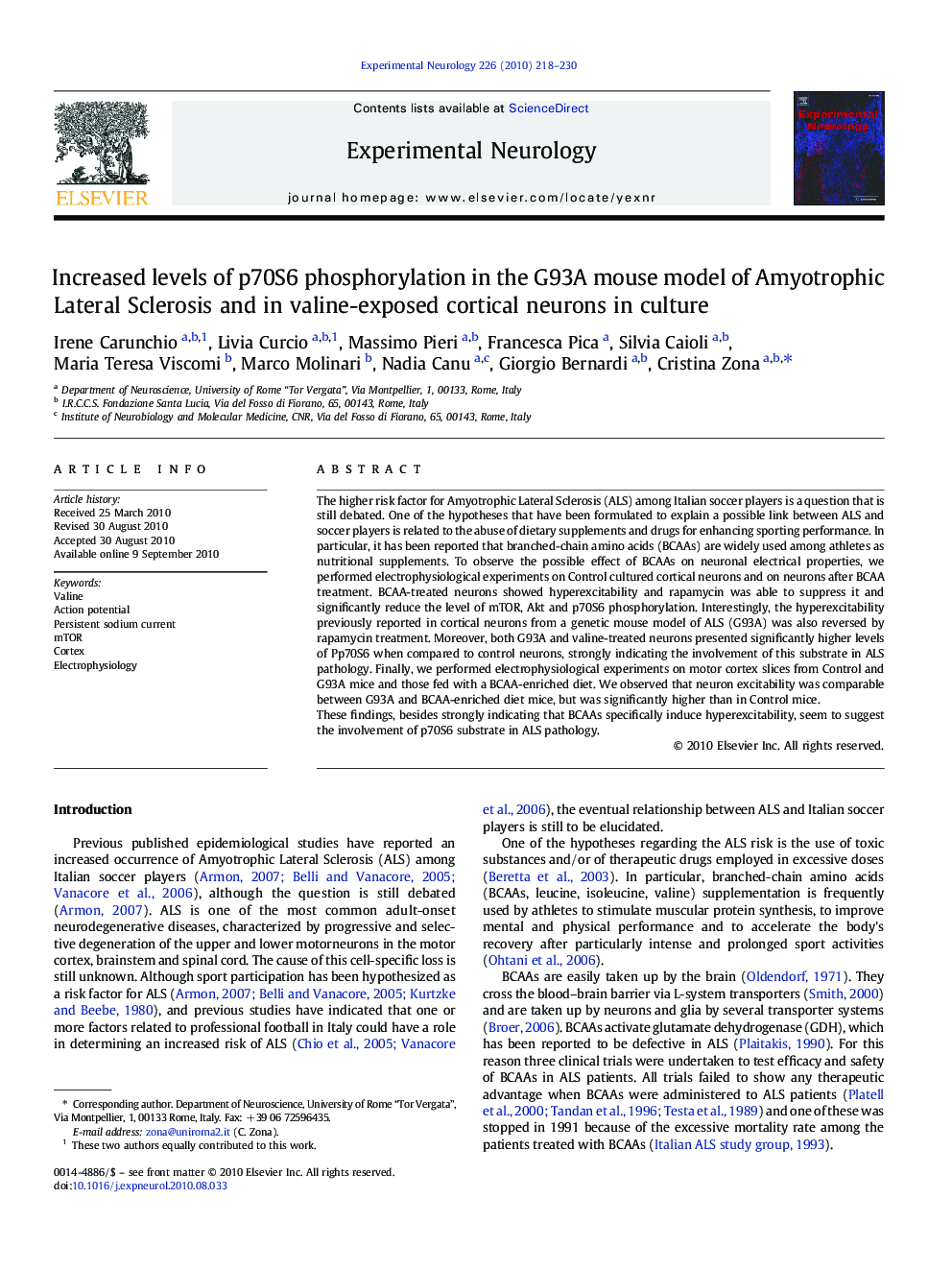| کد مقاله | کد نشریه | سال انتشار | مقاله انگلیسی | نسخه تمام متن |
|---|---|---|---|---|
| 3055969 | 1186546 | 2010 | 13 صفحه PDF | دانلود رایگان |

The higher risk factor for Amyotrophic Lateral Sclerosis (ALS) among Italian soccer players is a question that is still debated. One of the hypotheses that have been formulated to explain a possible link between ALS and soccer players is related to the abuse of dietary supplements and drugs for enhancing sporting performance. In particular, it has been reported that branched-chain amino acids (BCAAs) are widely used among athletes as nutritional supplements. To observe the possible effect of BCAAs on neuronal electrical properties, we performed electrophysiological experiments on Control cultured cortical neurons and on neurons after BCAA treatment. BCAA-treated neurons showed hyperexcitability and rapamycin was able to suppress it and significantly reduce the level of mTOR, Akt and p70S6 phosphorylation. Interestingly, the hyperexcitability previously reported in cortical neurons from a genetic mouse model of ALS (G93A) was also reversed by rapamycin treatment. Moreover, both G93A and valine-treated neurons presented significantly higher levels of Pp70S6 when compared to control neurons, strongly indicating the involvement of this substrate in ALS pathology. Finally, we performed electrophysiological experiments on motor cortex slices from Control and G93A mice and those fed with a BCAA-enriched diet. We observed that neuron excitability was comparable between G93A and BCAA-enriched diet mice, but was significantly higher than in Control mice.These findings, besides strongly indicating that BCAAs specifically induce hyperexcitability, seem to suggest the involvement of p70S6 substrate in ALS pathology.
Research Highlights
► Branched-chain amino acids (BCAAs) induce hyperexcitability in cortical neurons.
► BCAA-treated neurons present electrophysiological properties similar to G93A neurons.
► Hyperexcitability in G93A and BCAA-treated neurons is reversed by rapamycin.
► P70S6 phosphorylation is increased in G93A and BCAA-treated neurons.
Journal: Experimental Neurology - Volume 226, Issue 1, November 2010, Pages 218–230